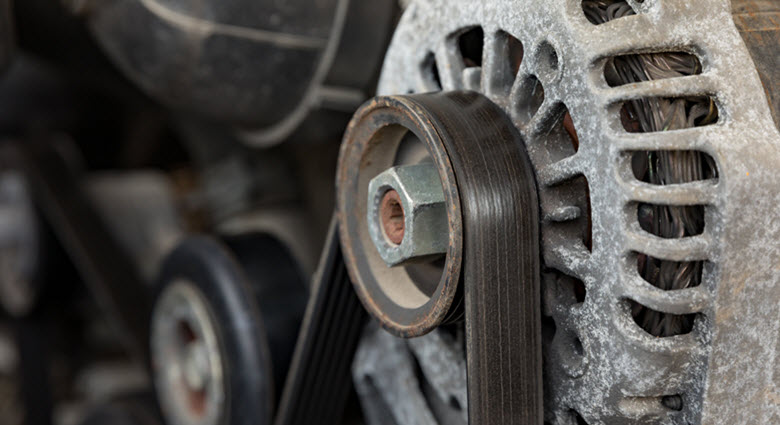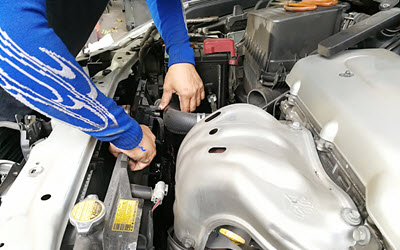Replacing Your Saab’s Serpentine Belt In Decatur – A DIY Guide

Your Saab’s engine system relies on many components to work properly, and one of them is known as the serpentine belt. This belt holds immense importance as it transfers power from the engine to essential auxiliary components like the alternator, water pump, power steering pump, and air conditioning compressor.
Without a properly functioning serpentine belt, your Saab’s overall operation would be compromised. Unfortunately, over time, this belt can experience wear and damage, necessitating a replacement. Let’s look at some causes of serpentine belt failure and how to replace it in your Saab if you want Do It Yourself (DIY) without professional service.
- Gather the necessary tools and materials: Before starting the replacement process, it’s important to ensure that you have all the required tools and materials. These typically include a socket set, a new serpentine belt specifically designed for your Saab model, and a diagram of the belt routing.
- Locate the serpentine belt: Open the hood of your Saab and locate the serpentine belt. It is a long, multi-ribbed belt that wraps around various pulleys in the engine compartment.
- Remove the old belt: Carefully remove the old serpentine belt from the remaining pulleys, ensuring not to damage any surrounding components. Make note of the belt’s orientation and routing before completely removing it from the engine.
- Install the new belt: Compare the old belt with the new one to ensure they have the same length and rib count. Begin by placing the new belt around the pulleys following the correct routing pattern as indicated by the diagram.
- Check the belt tension: After installing the new belt, visually inspect it to confirm it is sitting correctly on all the pulleys. Double-check that the routing matches the diagram, and ensure the belt is properly aligned. If this isn’t done correctly and at the right tension, it could ruin your engine. That’s why many Saab owners choose to have this done by professional mechanics.
Why Do Serpentine Belts Wear Out?
The serpentine belt relies on tensioners and pulleys to maintain proper tension and alignment. If the tensioner is faulty or the pulleys are worn out or misaligned, it can cause excessive stress on the belt, leading to premature failure.
The engine compartment is exposed to various contaminants, such as dirt, oil leaks, or coolant leaks. If these substances come into contact with the serpentine belt, they can cause the belt to become slippery or degrade its rubber composition, resulting in reduced grip and belt failure.
Incorrect installation of the serpentine belt, such as incorrect routing or inadequate tensioning, can put unnecessary stress on the belt. This can lead to premature wear and eventual failure.
If additional components, such as aftermarket accessories or modifications, are added to the engine system, it can increase the load on the serpentine belt beyond its intended capacity. This excessive load can cause the belt to stretch, slip, or break under the strain.
In rare cases, a serpentine belt can fail due to an unexpected mechanical issue, such as a seized pulley, a seized accessory component, or a belt tensioner failure. These situations can put excessive stress on the belt, causing it to snap or come off.
Watch for These Signs to Know When to Replace Your Saab’s Serpentine Belt
- Squealing or chirping noise: If you hear a high-pitched squealing or chirping noise coming from the front of your engine, it could be a sign of a worn-out or misaligned serpentine belt. This noise is typically caused by the belt slipping or not properly gripping the pulleys.
- Cracks or fraying: Inspect the serpentine belt for any visible signs of damage. Look for cracks, fraying, or missing chunks of the belt material. Over time, the belt can wear out due to exposure to heat, age, or excessive tension.
- Glazing or shiny appearance: A serpentine belt in good condition should have a matte finish. If you notice a glazed or shiny appearance on the belt’s surface, it indicates excessive heat and wear. This can lead to reduced grip and performance.
- Belt slippage: A worn-out serpentine belt may slip or come off the pulleys while the engine is running. This can cause a loss of power steering, air conditioning, or other accessories driven by the belt. If you experience sudden loss or fluctuations in these systems, it may be due to a failing belt.
- Engine overheating: The serpentine belt also drives the water pump, which is responsible for circulating coolant through the engine. If the belt fails, it may result in inadequate coolant circulation, leading to engine overheating.
The Best Saab Mechanics in Decatur are at Munich West
At Munich West, we understand the importance  of a properly functioning serpentine belt for your vehicle’s performance. Our commitment to quality service delivery makes us provide top-notch serpentine belt replacements and maintenance for drivers in Decatur and Atlanta, GA. We have a team of skilled technicians who are experienced in handling Saab vehicles and will ensure that any issue with the vehicle is fixed correctly. Book an appointment with us today to ensure the smooth performance of your Saab.
of a properly functioning serpentine belt for your vehicle’s performance. Our commitment to quality service delivery makes us provide top-notch serpentine belt replacements and maintenance for drivers in Decatur and Atlanta, GA. We have a team of skilled technicians who are experienced in handling Saab vehicles and will ensure that any issue with the vehicle is fixed correctly. Book an appointment with us today to ensure the smooth performance of your Saab.




